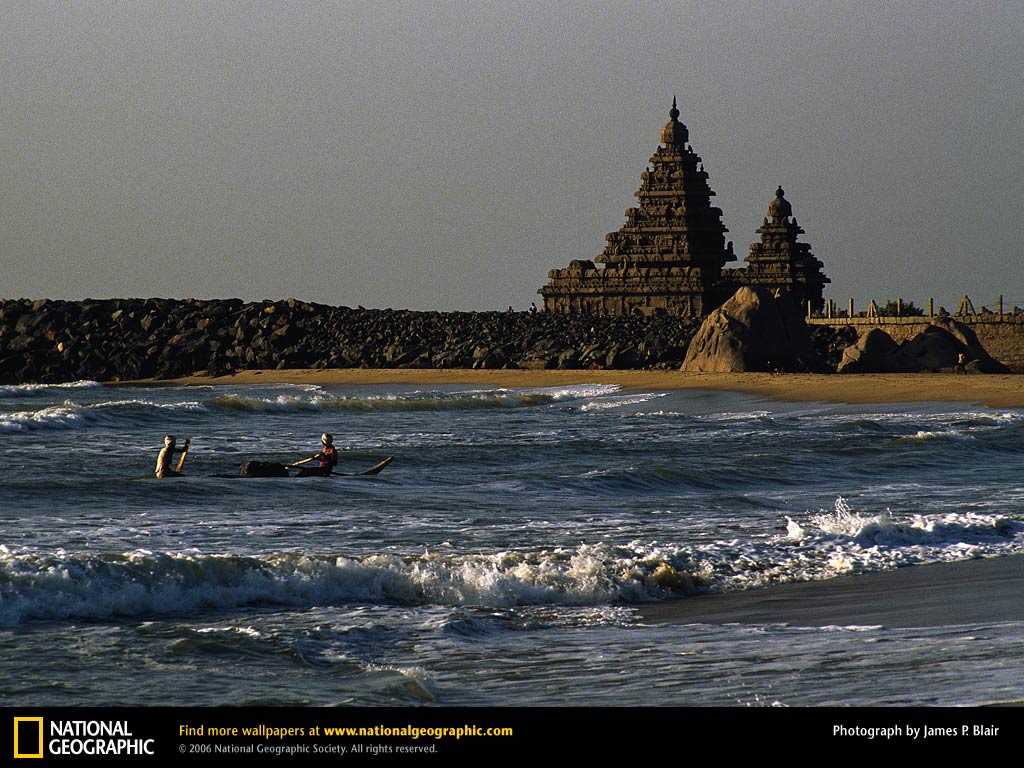Architectural Marvels of Chalukyas and Pallavas Across India
Dravidian architecture is usually an architectural idiom used for the typical structural style that emerged out of the southern part of India. Temples with pyramid-shaped towers, rich exquisite carvings, larger than life pillars and the divine presence of gods itself; mark the essence of Dravidian architecture. The unique amalgam of craftsmanship, artistry and rich history which gave birth to this structural design can be very easily attributed to the influence of Chalukya and the Pallava dynasty on the region between 5th -7th century.

Source – https://www.flickr.com/photos/nagarjun/7010458407
Besides their glorious reigns, the eternal legacy that these two dynasties left behind has been in the form of their marvellous enduring architecture and art. While Pallavas with their greatest work of art, in the form of single rock temples in Mahabalipuram and Kanchipuram, which are now part of Tamil Nadu, are considered as the pioneers of southern Indian Architecture; The chalukyas with their own style of “Chalukyan architecture” or “Karnata Dravida architecture” present the finest examples of Dravidian architecture in the form of the rock-cut temples of Pattadakal, a UNESCO World Heritage Site.
The Dravidian style temples were initially built in the Badami Chalukya – Pallava period. Pallavas were instrumental in the transition from rock-cut architecture to stone temples; they made pillared halls and monolithic shrines known as rathas in Mahabalipuram. Not only did the Pallavas pioneer in the construction of the rock cut temples (without using building materials like mortar, bricks etc), rather it was them who started constructing large temples and very large deities and idols.
Mahabalipuram, Also known as Mamallapuram, in the district of Kancheepuram is a wonder by its own standards. The 7th century chariot or ratha style of temples in Mahabalipuram –a UNESCO site in Tamil Nadu is one of the oldest monolithic rock-cut structures. Built by the Pallava kings, there are five of these marvels, each cut from a single stone. The 96 ft. high and 43 ft. long monolithic marvel called as “Arjuna’s Penance” or “Descent of the Ganges” is enough to take your breath away.

Source – http://indiaincredible.theholidayindia.com/photogallery/breathtaking-sites-of-tamilnadu/attachment/arjunas-penance-mahabalipuram-2/
This excellent stone relic is also the largest preserved open-air relief in the World. Built by the Pallavas between the seventh and the ninth century A.D, the pyramid-shaped tower with five stories and a dome or shikhara at the top, became the trademark of Dravidian temple architecture with large complexes within which multiple shrines were located. The temple has three shrines, two of which are dedicated to Lord Shiva, while the third has the deity of Lord Vishnu in a reclining pose.

Source – James P. Blair/National Geographic
From early cave temples that were carved from sandstone hills, the architectural design of South Indian temples slowly evolved to rock cut temples and finally, standalone structural temples that grew larger, both in terms of the area of the complexes as well as the height of the towers or vimanas. Aihole, Badami and Pattadakkal; As capitals of the Chalukya dynasty, these three ancient cities have as many as 150 monuments and temples, which were built from the 6th-8th century AD that weave a magnificent tapestry of culture art and architecture of the period.

Source – http://asi.nic.in/asi_monu_whs_pattadakkal.asp
The most notable and celebrated are the ochre-colored shrines of Pattadakal in Karnataka. Sprawled amidst the mountains the temple complex that’s a fusion of architectural styles, including the Dravidian (South-Indian) and Nagara (North-Indian) architectural styles. Located just a few kilometers away from Badami and Aihole, the temple complex was built between the 7th and 9th Centuries by the Chalukya kings and is a UNESCO heritage site since 1987.
The group of temples at Pattadakal comprises 10 temples, 8 in one cluster, one about half a km north of the main cluster and another located about 1.5 km northwest of the main group. These temples stylistically resolve into two distinct categories. The dravida vimana type represented by the Virupaksha, Mallikarjuna and Sangameswara temples and the rekhanagara prasada type represented by the Kadasiddeswara, Jambulinga, Galaganatha, Kasivisweswara and Papanatha temples.

Source – http://highwayonlyway.com/2013/01/29/trip-to-chalukyan-era-iv-pattadakal-rd-in-architecture-1400-years-ago/
With elaborate sculptures of Hindu gods and goddesses exhibiting grace and vitality, embellished pillars in the interiors and the delicate ornamental details of the temple of Pattadakal provide the perfect glimpse and testimony of rich imagination and mastery of Chalukyan architecture.
Though the Pallavas and Chalukyas have been known for their incessant rivalry, the wars between the two dynasties never came in-between the growth of the rich cultural heritage. Their mutual exchange and influence of architectural styles can be very easily seen in the beauty, rhythm, romance, spirituality and vigor captured in stone by their masterful craftsmen. The Pattadakal temples, are the perfect example of this confluence which shows influence of the Pallava school of architecture.
Now you can buy Badami souvenir tshirts on our store – link.
REFERENCES:
http://10yearitch.com/travel/south-indian-temple-architecture/
https://en.wikipedia.org/wiki/Dravidian_architecture
https://en.wikipedia.org/wiki/Pallava_dynasty
http://www.thehindu.com/features/metroplus/travel/carved-for-eternity/article4584757.ece
Article by – Heeba Din

